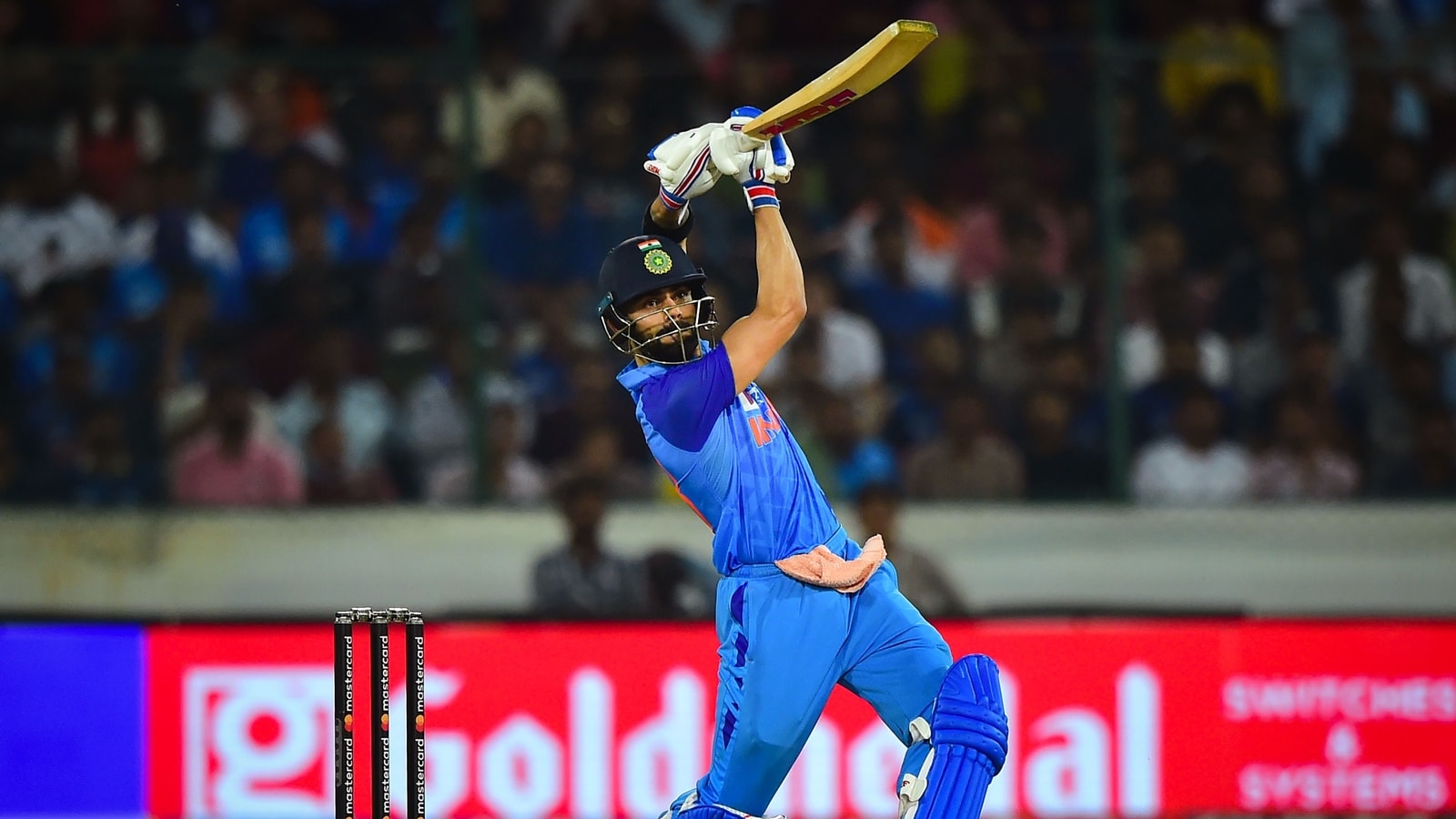Cricket Analytics utilizes player rankings to measure performance and determine player standings. We will delve into the significance of player rankings in cricket, exploring how they are calculated and why they matter.
Gain insight into the factors considered, such as batting and bowling averages, strike rates, and performance in different formats of the game. Discover how these rankings can help teams make informed decisions on player selection and strategize their game plans effectively.
Stay tuned to unravel the world of cricket analytics and understand the intricacies of player rankings in this popular sport.
Evolution Of Player Evaluation Metrics
In the world of cricket, player rankings play a crucial role in evaluating the performance and value of players. Over the years, there has been an evolution in the metrics used for player evaluation, with traditional techniques giving way to modern analytical approaches. Traditional evaluation methods relied heavily on subjective judgment, focusing on statistics such as batting average, bowling average, and total runs scored. However, with the advent of cricket analytics, a more comprehensive and data-driven approach has emerged.
The modern player evaluation techniques in cricket analytics take into account various factors like runs per innings, strike rate, dot ball percentage, economy rate, and player impact index. These metrics provide a more holistic view of a player’s contribution to the game. Advanced statistical models and algorithms are employed to analyze vast amounts of data and derive meaningful insights. This allows teams and selectors to make informed decisions based on objective evidence.
Cricket analytics has revolutionized player ranking and evaluation, providing a more accurate and objective assessment of player performance. It has paved the way for a deeper understanding of the game and has become an indispensable tool in the world of cricket.
Importance Of Player Rankings In Cricket
Player rankings play a vital role in cricket, providing a comprehensive assessment of individual performance. These rankings are of utmost importance when it comes to team selection, as they help coaches and selectors determine the proficiency and consistency of players. Rankings take into account various statistical factors, such as batting average, bowling average, strike rate, and number of wickets taken or runs scored. Such data analysis allows for an objective evaluation of a player’s current form and expertise.
Moreover, rankings also have a significant impact on player contracts. Higher-ranked players are often offered more lucrative contracts due to their proven track record and ability to perform consistently. Sponsors and team owners seek players who can attract a large audience and deliver outstanding performances on the field. These rankings serve as a testament to a player’s abilities and enable negotiations for better contracts.
Overall, player rankings provide valuable insights for both team management and players themselves. They serve as a benchmark for performance evaluation, influencing team selection and contract negotiations. Emphasizing the importance of individual rankings enhances healthy competition among players and drives them to continuously improve and deliver exceptional performances on the cricket pitch.
Batting Performance Metrics
Cricket analytics has revolutionized the way we understand player rankings. Under the batting performance metrics, three key factors come into play: average runs scored, batting strike rate, and boundary percentage.
Average runs scored reflects a player’s consistency to score runs. It is calculated by dividing the total runs scored by the number of innings played. A higher average indicates a player’s ability to consistently contribute to the team’s score.
Batting strike rate measures a player’s ability to score runs quickly. It is calculated by dividing the total runs scored by the total number of balls faced and multiplying by 100. A higher strike rate indicates a player’s aggressive approach.
Boundary percentage signifies the proportion of total runs scored through boundaries. Boundaries include fours and sixes, which are considered to be key scoring shots in cricket. A higher boundary percentage indicates a player’s ability to find the gaps and hit the ball to the boundary consistently.
Understanding these metrics helps in evaluating a player’s batting performance and their impact on the game.
Bowling Performance Metrics
In cricket, player rankings are crucial for evaluating performance and understanding a player’s capabilities. When it comes to bowling performance metrics, several key factors determine a bowler’s effectiveness on the field. Average runs conceded is a valuable statistic that measures the typical number of runs a bowler concedes per match. It provides insights into a bowler’s consistency and ability to restrict the opposition’s scoring.
Bowling economy rate is another vital metric that indicates a bowler’s ability to control the flow of runs. It calculates the average number of runs conceded per over. A lower economy rate signifies a more economical bowler who doesn’t leak runs easily, putting pressure on the batsmen.
Bowling strike rate is a measure of a bowler’s effectiveness in taking wickets. It represents the average number of balls bowled by a bowler to dismiss an opponent. A lower strike rate indicates a bowler who regularly takes wickets and disrupts the opposition’s batting line-up.
Fielding Performance Metrics
Cricket analytics plays a crucial role in understanding player rankings. When it comes to fielding performance, various metrics are used to evaluate a player’s skills. One important metric is the number of catches taken. A player’s ability to catch the ball cleanly offers valuable contributions to their team. Run outs executed is another performance metric, measuring a player’s ability to successfully dismiss opponents by hitting the stumps or breaking the wicket with the ball. Fielding percentage is also assessed to determine a player’s overall fielding ability, calculated by dividing the successful fielding instances by the total opportunities. These performance metrics provide valuable insights into a player’s fielding capabilities and contribute to their overall ranking in the game of cricket.
Icc Player Rankings
Cricket analytics plays a crucial role in understanding player rankings, as determined by the International Cricket Council (ICC). The ICC player rankings employ a specific methodology and criteria to evaluate players’ performance in various aspects of the game. These rankings are regularly updated to provide the latest information on player standings.
The methodology used by the ICC involves assigning points to players based on their performance in matches. Different weightages are given to batting, bowling, and all-round skills, depending on the format of the game. This data-driven approach allows for a comprehensive assessment of players across different teams and formats.
By providing insights into the performance and abilities of players, the ICC player rankings enable cricket enthusiasts to gain a better understanding of the game. It serves as a valuable resource for fans, journalists, and team selectors, helping them make informed decisions and engage in meaningful discussions about players’ capabilities.
Stay updated with the latest rankings to keep track of the top-performing players and gain a deeper understanding of the ever-evolving world of cricket.
Alternative Player Ranking Systems
Cricket Analytics has revolutionized the way players are ranked and evaluated. Alternative Player Ranking Systems have emerged to provide a more comprehensive understanding of a player’s performance. One such system is the ESPN Cricinfo Ashes Fantasy Performance Points, which takes into account various factors like batting, bowling, and fielding skills, as well as overall impact on the game. Another system gaining popularity is CricViz Smart Stats, which uses advanced metrics to assess a player’s contribution beyond traditional statistics. These alternative ranking systems provide a more nuanced perspective, enabling fans and analysts to delve deeper into a player’s capabilities and value to the team. By incorporating a range of factors, these systems go beyond simple averages and help identify hidden talents and potential game-changers. Whether it’s analyzing performance in a specific series or assessing long-term consistency, these alternative player ranking systems offer a fresh approach to understanding the true impact of a player on the cricket field.
Role Of Machine Learning In Player Rankings
Cricket analytics has seen a significant transformation with the advent of machine learning in determining player rankings. Machine learning algorithms have revolutionized the way player rankings are assessed, enabling more accurate and data-driven evaluations. By leveraging vast amounts of player data, machine learning algorithms can identify patterns, trends, and performance indicators that human analysis might overlook.
One way in which data is used for accurate assessments is through predictive analytics. These analytics models utilize historical player data and match statistics to forecast future performance and determine player rankings. By considering various factors such as batting average, bowling economy, and fielding efficiency, predictive analytics algorithms generate rankings that are objective, unbiased, and reflective of a player’s overall performance.
Subjectivity And Bias In Rankings
Player rankings in cricket analytics can sometimes be subjective and biased. The impact of playing conditions and context plays a crucial role in the rankings of players. Statistical noise also needs to be taken into account when evaluating rankings. Different playing conditions, such as pitch type and weather, can significantly influence a player’s performance and subsequently their ranking. For example, a bowler may perform exceptionally well in spin-friendly conditions but struggle in seaming conditions. Similarly, a batsman may excel in handling swing and pace but struggle against spin. Contextual factors like the strength of the opposition team and the importance of the match also impact rankings. Statistical noise, which refers to random variations in data, can affect rankings as well. It is essential to consider these factors when interpreting player rankings in cricket analytics.
Outliers And Anomalies In Player Rankings
Player rankings in cricket are essential for evaluating individual performance and comparing athletes across teams and eras. However, it is crucial to acknowledge that rankings may occasionally present outliers or anomalies. These outliers can lead to unfair assessments and biased perceptions. To address this issue, it is important to identify and tackle unfair rankings. One way to achieve this is through statistical adjustments for special cases. By carefully analyzing the data, cricket analysts can pinpoint instances where rankings may not accurately reflect a player’s true abilities. For example, injuries or temporary dips in form may negatively impact a player’s ranking, resulting in an inaccurate representation of their overall skills. To address these situations, adjustments can be made to ensure a fairer evaluation. Statistical adjustments account for anomalies and allow for a more comprehensive understanding of a player’s performance. By implementing these adjustments, cricket analytics can provide a more accurate representation of player rankings, ensuring a fair and unbiased assessment of their skills and contributions to the game.
Advanced Data Visualization Techniques
Cricket Analytics involves the use of advanced data visualization techniques to gain insights into player rankings. Graphical representation of player rankings plays a crucial role in understanding and analyzing the performance of cricket players. Interactive dashboards provide a user-friendly interface for in-depth analysis.
The use of graphs and charts enables the presentation of data in a visually appealing and easily understandable format. With the help of these visual representations, cricket analysts and enthusiasts can quickly identify trends, patterns, and outliers. This information is invaluable for making informed decisions, such as team selection, strategy formulation, and player performance evaluation.
By utilizing interactive dashboards, users can interact with the data and customize their analysis according to specific requirements. This flexibility allows for a deeper exploration of player rankings, enabling stakeholders to gain comprehensive insights and enhance their understanding of the game.

Credit: www.hindustantimes.com
Integration Of Artificial Intelligence
Cricket Analytics plays a vital role in understanding player rankings. One key aspect is the integration of Artificial Intelligence (AI) in the analysis and prediction of player performance. Utilizing AI-powered predictive models, cricket teams and coaches can make data-driven decisions to enhance their strategies. These models enable the prediction of player rankings based on various factors such as batting and bowling averages, strike rates, and past performance. They provide valuable insights into player strengths and weaknesses, helping coaches identify areas for improvement and optimize training sessions. Moreover, AI-powered analytics can suggest personalized recommendations for both coaches and players to enhance overall performance. By leveraging the power of AI, cricket teams can gain a competitive edge and make informed decisions to nurture talent and improve player rankings.
Continued Evolution Of Cricket Analytics
Continued evolution of cricket analytics has the potential to bring about a significant impact on the sport. Player rankings play a crucial role in evaluating performance and understanding the strengths and weaknesses of players. With the use of analytics, players and teams can gain valuable insights and make informed decisions to enhance their game strategies. Some of the benefits of cricket analytics include:
- Improved Player Evaluation: Analytics provide a comprehensive view of a player’s performance, allowing for better evaluation of their abilities.
- Enhanced Team Selection: Coaches and selectors can utilize analytics to identify the most suitable players based on data-driven insights.
- Data-Driven Game Strategies: Teams can make informed decisions during matches by analyzing opponent data and identifying potential weaknesses.
- Performance Tracking: Analytics help in monitoring player performance over time, identifying areas for improvement, and tracking progress.
- Enhanced Talent Identification: Analytics enable the identification of promising talent, even at early stages, by analyzing performance metrics.
- Better Fan Engagement: Analytics-driven insights can be shared with fans, enhancing their understanding and enjoyment of the game.
The continued evolution of cricket analytics provides a valuable tool for players, teams, and fans alike, enabling a deeper understanding of the sport and driving its growth.
Frequently Asked Questions On Cricket Analytics: Understanding Player Rankings
How Do You Analyse A Cricket Player?
To analyze a cricket player, closely observe their performance, statistics, skills, and consistency in matches.
How Is Icc Player Ranking Calculated?
ICC player rankings are calculated based on player performance in international matches. Factors like runs, wickets, etc. Contribute to rankings.
How To Calculate Player Ranking Points In Cricket With Example?
Player ranking points in cricket can be calculated by considering a player’s performance in various aspects of the game. For example, runs scored, wickets taken, and catches made contribute to the overall ranking score.
How Do You Count Ranks In Cricket?
In cricket, ranks are counted based on a team’s performance and points earned in matches.
Faq 1: How Are Cricket Player Rankings Calculated By Cricket Analytics?
Cricket player rankings are calculated by analyzing a player’s performance in various aspects of the game, such as batting, bowling, and fielding. Statistical algorithms and performance metrics are used to assess and compare players on a global scale.
Conclusion
Cricket analytics has revolutionized the way player rankings are determined. The use of statistics and data analysis has provided a more objective and accurate way to evaluate player performance. By considering factors such as batting average, bowling average, strike rate, and other key metrics, cricket analytics can identify the top-performing players across different formats of the game.
This not only helps in selecting the best players for national teams but also enables cricket enthusiasts and fans to have informed discussions and debates about the sport. Moreover, cricket analytics has opened up a whole new world of opportunities for players to improve their game by identifying their strengths and weaknesses based on data insights.
In an era where cricket is becoming increasingly competitive, understanding player rankings through analytics has become essential for teams and players alike. So, next time you’re watching a match, don’t just rely on your gut feeling – explore the fascinating world of cricket analytics and gain a deeper appreciation for the game.




